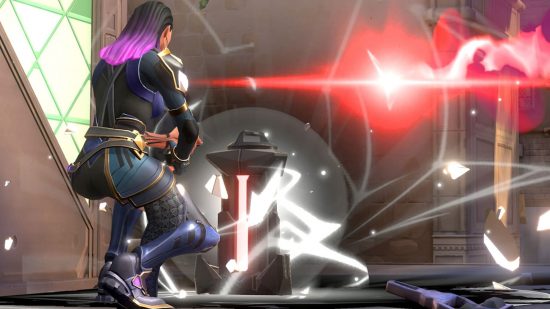Deciding who should plant the spike in Valorant is a simple concept, but it’s considered the least heroic task, so it makes sense that players don’t want it on their resumes. Consequently, the spike often ends up in the spawn, in defenders’ control. That’s when the infamous discord over who should have carried the spike consumes the FPS game‘s team chat.
Of course, it’s not a particular character’s responsibility to set up the bomb, as the spike spawns in the mid of the attackers’ base, but a few pointers can help deduce who should bear the brunt of a fallen spike.
Valorant’s no-nonsense class divisions put FPS’ 5v5 conflicts to rest by assigning clear duties. But to crack the spike dilemma just as Reddit has, we must reopen the dusty catalogue of generic FPS roles. Valorant’s four categories are loosely based on the classic first entry, second entry, support, and lurk roles that have existed in the shooter genre for eons. There’s no absolute definition of spike carrier, as it heavily depends on the situation, role execution, and utility, but generic roles point to the second entry as the ideal candidate.
Who is the ideal spike carrier in Valorant?
Unfortunately, Riot hasn’t rolled out a ‘spike-carrier’ category, but it’s pretty simple to figure out. A spike carrier should be:
- Second entry (initiator, or a controller in some cases)
- Anyone but a duelist or lurker
- Lacking one ult-point
- Have the least valuable toolkit post-site entry
In the FPS, the second entry is the best candidate to hold the spike. If your team is strictly playing by the book, the initiator should be carrying the bomb. The first entry – that’s our duelist in Valorant – should keep their inventories simple and risk-free. Making space, even if it requires dying early in the round, is the primary responsibility of a duelist, which is why equipping a character like Raze or Reyna with the spike is super dicey.
Conversely, a second entry has plenty of time and equipment to adjust and finish off tenderized enemies. Sentinels and controllers remain helpful until the end of the round, but an initiator is most valuable until site control has been acquired. For example, the two duelists can burst onto the site on the back of Skye or Breach’s flash, who can activate the spike. Once the clock starts ticking, the initiator’s kit has already fulfilled its purpose with bonus utility restocking. Compared to Viper, Killjoy, Chamber, early death of a Breach or Skye is of no consequence.
To add to this, the chances of an initiator dying on site are less than a controller or sentinel. A Killjoy or Chamber deal damage while planting their abilities for post-plant, which is why valuable sentinels should only enter the point when safety is assured.
There’s no hard and fast rule to planting the spike. The role responsibilities may switch based on the ult-point situation. Controllers and sentinels have some of the best post-plant ults, so if they’re lacking one point, it’s okay to let them plant instead.
Do you know what is vital to winning other than responsibly playing your role? Good FPS. Read our best Valorant settings guide to tweak your in-game settings in order to achieve decent latency on a low-end rig. While you’re at it, you might want to check out the best Valorant crosshairs to make sure you’re all set to pop heads.
